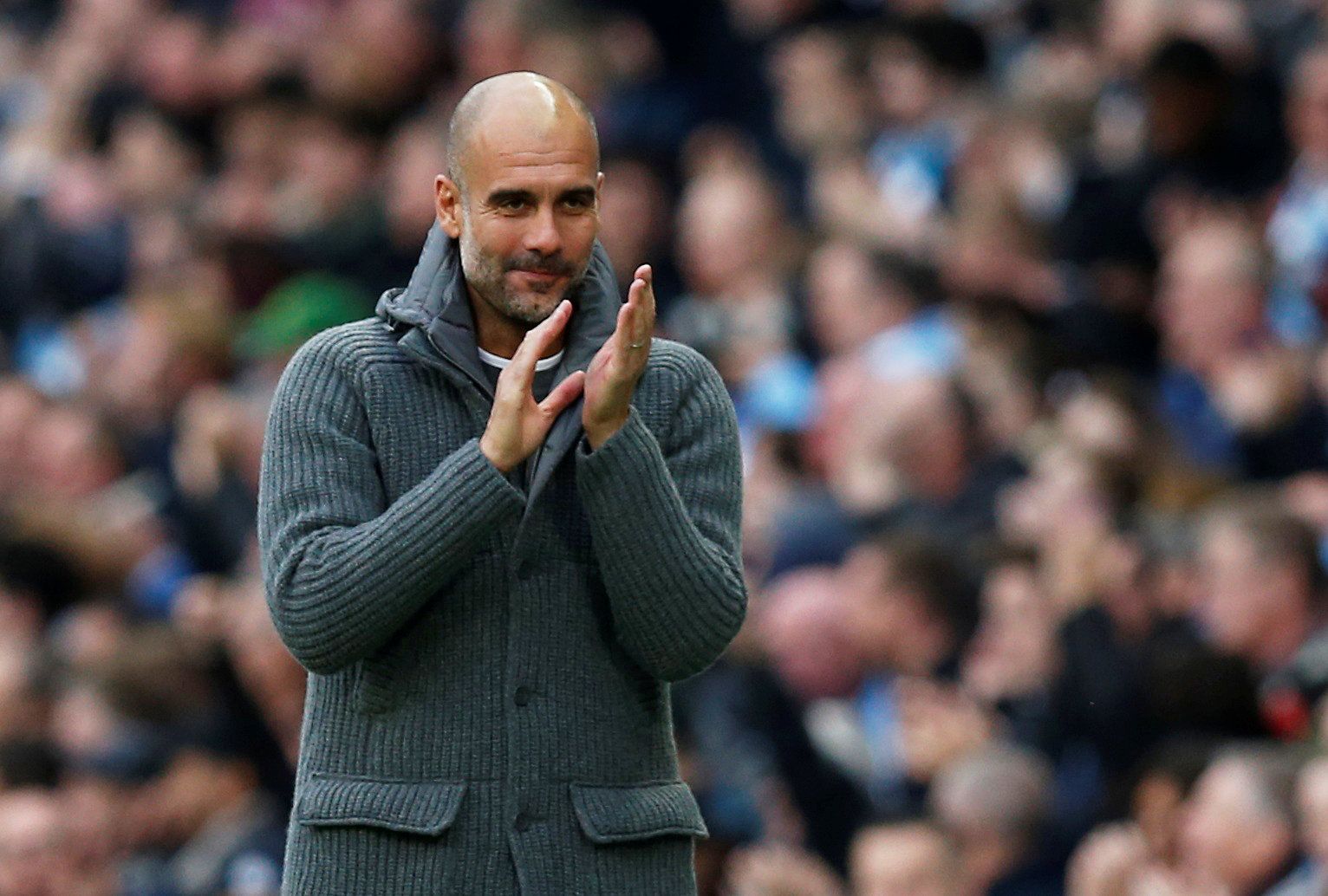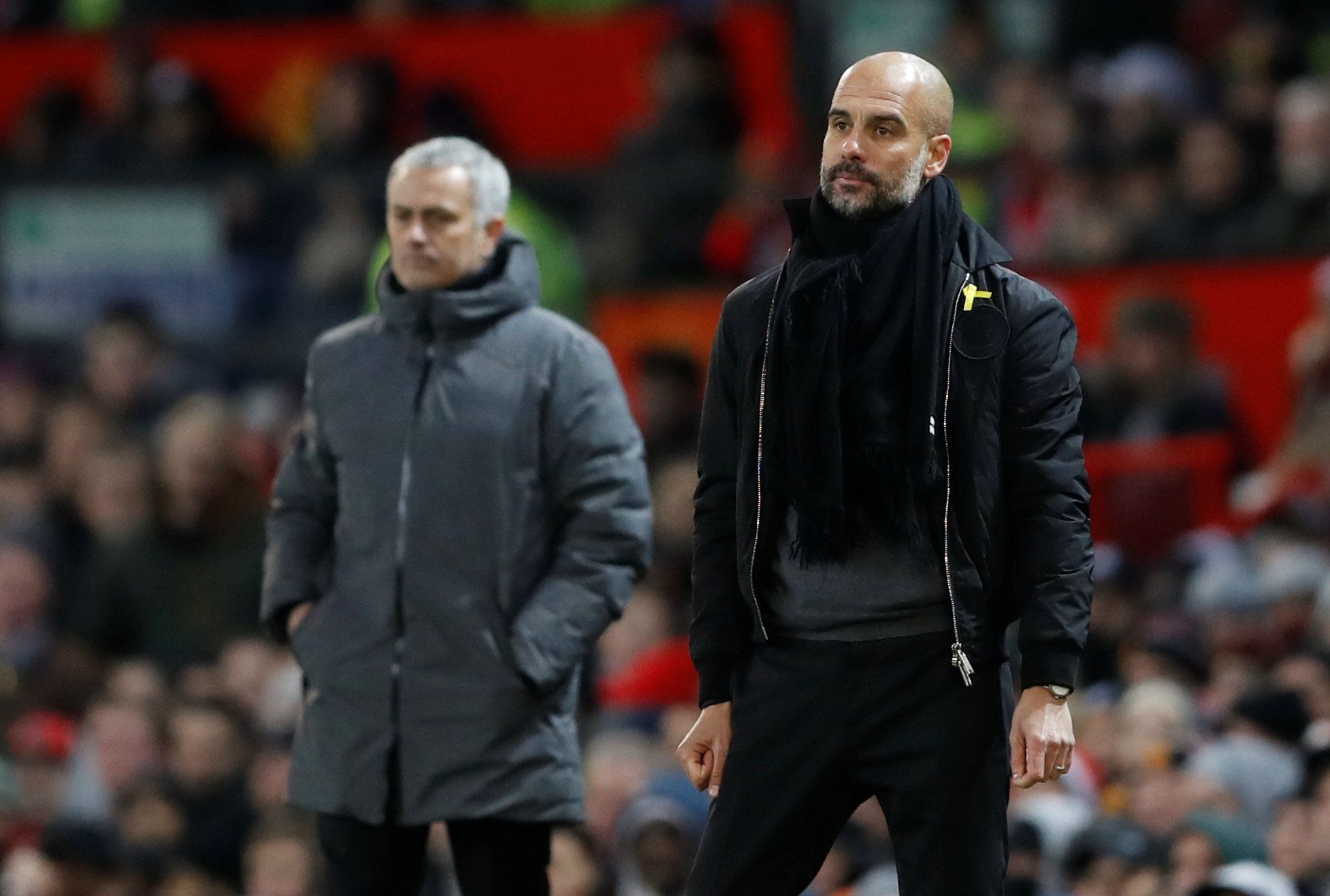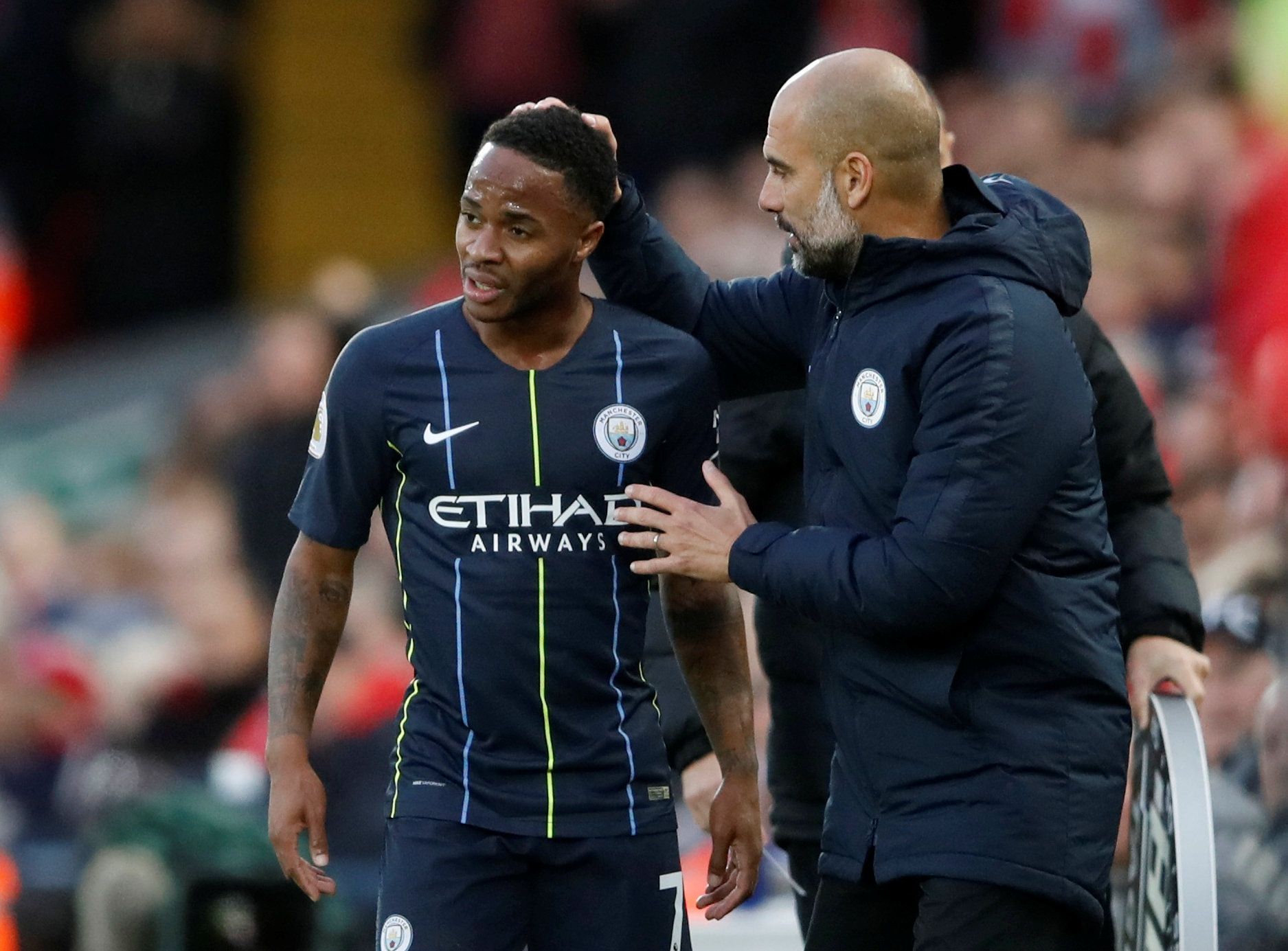[ad_pod ]
Each week, our friends over at totalfootballanalysis.com bring us a tactical preview of the Fixture in Focus. Today, Lead Analyst Lee Scott looks at Manchester City vs Manchester United in the Premier League.
In terms of narratives, matches in the modern era do not get much bigger than the Manchester derby in the Premier League. From the contrast in playing style, with City being recognised as one of the most progressive attacking teams in football and United being known for their reactive and almost negative mantra, to the personalities and media persona of their coaches; Pep Guardiola is held as an example of a forward-thinking coach for the modern era, Jose Mourinho of Manchester United on the other hand is seen as a more negative coach who has been left behind by changes to the tactical and technical systems within football.
With Manchester City continuing to set the pace at the top of the Premier League as they look to retain their title and with Manchester United languishing in mid-table there is a definite sense that the balance of power within Manchester, and indeed, within England has shifted toward the blue side of the city having resided firmly with the red half for a period of decades of United dominance.
In matches of this magnitude, however, there is no guarantee that the pre-match narratives will match the performances on the field. Both sides are coming into this match on the back of mid-week games in the Champions League - City played at home and won comfortably against Shakhtar Donetsk 6-1 but United travelled to Turin for a difficult match against the Italian giants Juventus.
Two late goals gave United an excellent victory over Juventus but the effort exerted to win the match may well be telling when United have to recover and then prepare for another high profile match.
One of the key tactical aspects of this match will come in the way that United look to attack. There is no question that Manchester City will dominate possession of the ball and that United will spend a lot of time defending. The key comes in the transition from defence to attack for United and attack to defence for City. How exactly will City look to deny United the opportunity to counter-attack quickly?
City Counterpress
During his first few years as a coach, a blueprint of Guardiola’s style quickly became evident. They dominated possession of the ball through the thirds of the field and very much concentrated on moving the opposition out of position before penetrating into the penalty area through quick and incisive combination play. Out of possession though the Barcelona and Guardiola style was also very evident as they looked to counter-press in moments of immediate transition from attack to defence.
This form of transition has two key aims, firstly, they are looking to disrupt the ability that the opposition has to launch a quick and accurate counter attack by pressing the man in possession immediately. Secondly, they have the ability to press and win the ball back quickly in transition - if they are able to win the ball back close to the opposition goal then there is an increased chance of creating a goal scoring opportunity quickly.
Here we see an example of City losing possession wide in the left area, the key lies in the immediate moment of transition. Under Guardiola we see City use at least three players in the moment of transition in order to counter-press and close down the opposition player now in possession of the ball. These three players will tend to be the player who has lost possession and his two closest teammates in the attacking structure. The idea behind counter-pressing is that the opposition are at their most vulnerable when they first win the ball back, as that player has just exerted energy and may not have a full picture of what the pitch looks like around them.
City will look to swarm the ball to either win it back immediately or force the opposition player to make a bad pass up the field which can be intercepted and turned over by the defensive players. What we will tend to see is that the three pressing players will engage at different angles in order to further pressure on the man in possession and cut down passing lanes.
Behind the initial move to counter-press and win the ball back immediately comes the first section of the defensive block for Manchester City. We tend to see City operate in something close to a pendulum system when in possession with the ball-sided full-back advancing high up the field and the far sided fullback moving into more of an inverted position on the same line as the deepest-lying midfielder.
In more sustained attacking movements there are times when both fullbacks move into this inverted position to form a line of three. This inverted, deeper, movement from the full-backs is provided to add an element of security to the City system.
Should the opposition be able to win the ball back and should they be able to play through the initial counter-press then they will come up against a solid and compact midfield block that will prevent them from playing easily into the central areas of the field.
Instead what we see is that the opposition are again forced to play long and over the top of the midfield.
City compact structure
When in the attacking phase we see the Manchester City defenders move forward to occupy high positions either just inside the opponents' half or just inside their own. This is a deliberate mechanism used by Guardiola in order to keep significant levels of pressure on the opposition.
They cut down the area of the field to ensure that the ball is kept as securely as possible in the opponents; half and ensure that when in possession they always have options with which to circulate the ball and change the angle of the attack quickly. This is why the likes of John Stones and Aymeric Laporte have become so prevalent in the City build-up in the attacking phase.
As with everything that Guardiola does, however, this structure is also designed to prevent the opposition from easily managing to counter-attack should they win possession of the ball.
Here we have an example of sustained possession form Manchester City where the two full-backs have dropped into inverted areas of the field alongside the controlling midfielder, usually Fernandinho. The two central defenders are positioned inside their own half of the field but note the positioning of the five players in question.
The two central defenders are positioned on vertical lines that are between the full-backs and the central midfielder. This staggered positioning is intended to make it difficult for the opposition to find passing lanes to get the ball into the final third. They are also staggered in such a manner to make it difficult for the ball to be played into an opposition forward lingering between the lines of midfield and defence.
When the opposition do manage to move the ball forwards successfully in transition we see just how hard the Manchester City players are willing to work in the defensive phase in order to prevent the second or third ball being played into their own defensive third. In this example, the opposition are able to move the ball out to their own attacking right-hand side.
As soon as the man in possession of the ball takes up this position he will be quickly pressed by the defensive players for City as they look to cut the ball off immediately to prevent the opposition from finding a route into the penalty area. More often than not we see City deliberately funnel the opposition counter-attacks out into wide areas as opposed to allowing them space in the central areas. When the opponent has possession against the touchline the range of movement and passing lanes are cut in half.
As we had seen previously City will look to engage the opponent in possession at different angles in order to overwhelm them and prevent them from playing through the press using open passing lanes.
[brid autoplay="true" video="328975" player="12034" title="Watch Fixture in Focus Manchester City vs Manchester United"]
Conclusion
The ability of Manchester United to launch quick and incisive counter attacks will be the key tactical aspect of the Manchester derby this weekend. If they allow City the space and time to dominate possession without the threat of an effective counter-attack then we will see the champions simply increase the pressure on the United defence incrementally until there is a breakthrough. City though, are so tightly geared towards stopping counter-attacks that even forward advances on the break may not be enough to stop the Guardiola machine.







